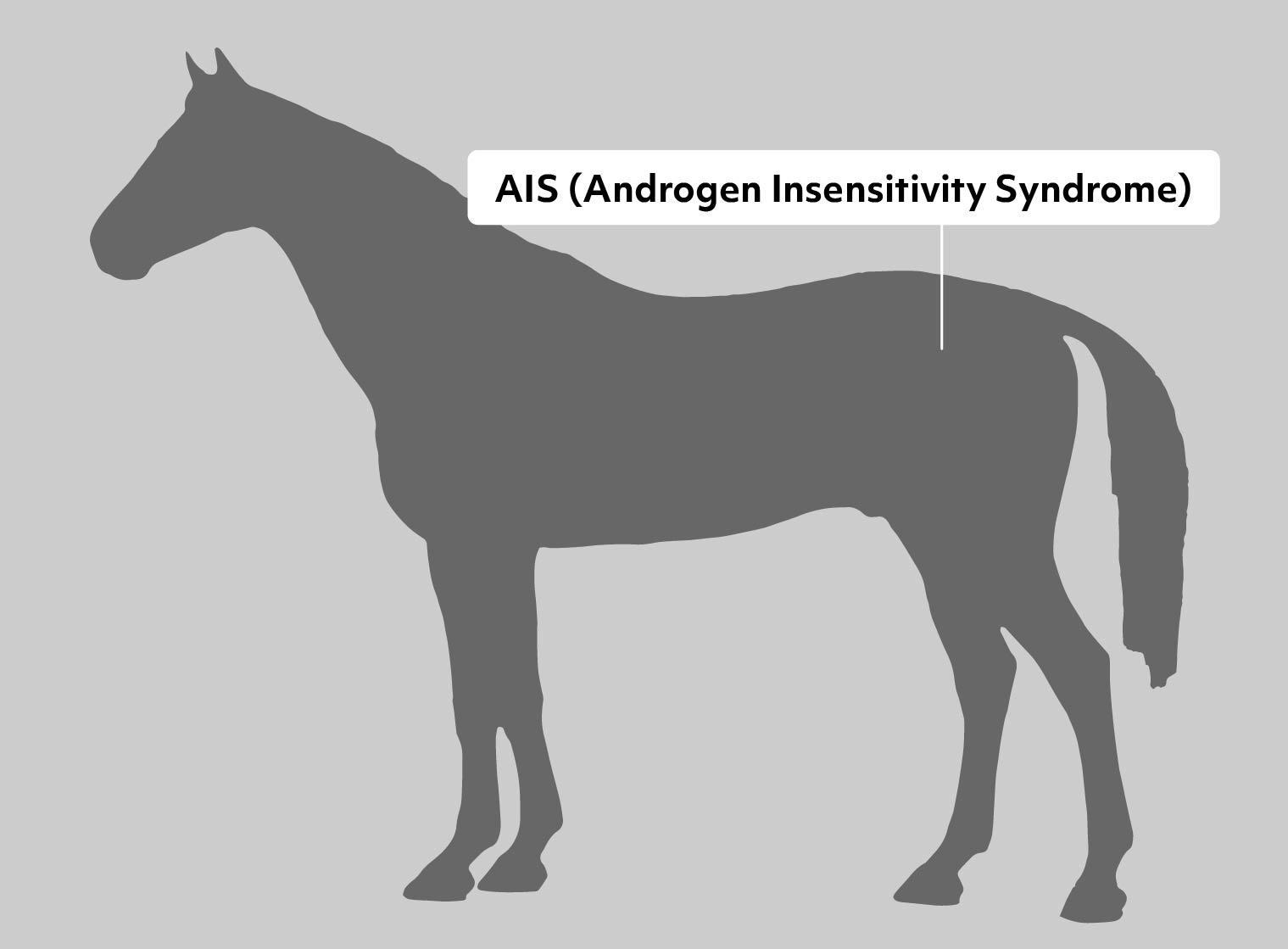Androgen Insensitivity Syndrome (AIS)
Gene or Region: AR
Reference Variant: A
Mutant Variant: G
Affected Breeds: Quarter Horses
Research Confidence: High - Findings supported by other species
Explanation of Results: AIS/AIS = homozygous for Androgen Insensitivity Syndrome, not observed AIS/n (female) = heterozygous for Androgen Insensitivity Syndrome, female carrier AIS/n (male) = heterozygous for Androgen Insensitivity Syndrome, sterile and phenotypically female n/n = no variant detected
General Description for Androgen Insensitivity Syndrome
Androgen Insensitivity Syndrome (AIS), previously known as Testicular Feminization Syndrome, is a disorder of sexual development in which a horse with a XY SRY+ karyotype appears female. Horses with AIS exhibit stallion-like behaviors, have external female genitalia, and often internal un-descended testicles.
AR is a steroid-activated transcription factor that plays a key role in normal sexual development. Mutations in other species have been noted to cause AIS and have been associated with prostate cancer. This particular mutation is a single base change that alters the start codon of the encoded protein. Though normal transcription and translation still occurs, the encoded protein likes has an altered function.
References
Révay T et al., “GTG mutation in the start codon of the androgen receptor gene in a family of horses with 64,XY disorder of sex development.” (2012) Sex Dev. 6: 108-16. PMID: 22095250
More Horse Health
Equine Herpes Virus Type 1 & Induced Myeloencephalopathy
Equine herpesviruses are DNA viruses that are found in most horses all over the world, often without any serious side effects. Following infection of Equine Herpesvirus Type 1 (EHV-1) some horses then suffer Equine Herpesvirus Myeloencephalopathy (EHM), which is is accompanied by serious and sometimes fatal neurological effects. EHM in horses can have serious neurological symptoms on affected horses.
Equine Metabolic Syndrome / Laminitis Risk
Equine Metabolic Syndrome (EMS) is a wide-spread issue in the horse population. Primarily characterized by hyperinsulinemia (excess insulin circulating in the blood in relation to glucose levels), this metabolic disorder is often present in obese horses and ponies and can be challenging to diagnose as it can be misdiagnosed as "Cushing's" (a pituitary disfunction).
Equine Recurrent Uveitis Risk and Severity
Equine Recurrent Uveitis (ERU) is the most common cause of blindness in horses, affecting about 3-15% of the horse population worldwide. Characterized by episodes of inflammation of the middle layer of the eye, Equine Recurrent Uveitis in horses leads to the development of cataracts, glaucoma and eventually complete loss of vision.
